- Clone
- 3/23 (See other available formats)
- Regulatory Status
- RUO
- Other Names
- Bp50, TNFRSF5
- Isotype
- Rat IgG2a, κ
- Barcode Sequence
- ATTTGTATGCTGGAG
| Cat # | Size | Price | Quantity Check Availability | ||
|---|---|---|---|---|---|
| 124635 | 10 µg | $369.00 | |||
CD40 is a 48 kD type I transmembrane glycoprotein also known as Bp50. It is a member of the tumor necrosis factor receptor (TNFR) superfamily and is expressed on B cells, basal epithelial cells, macrophages, follicular dendritic cells, endothelial cells, and a subset of CD34+ hematopoietic progenitors. CD40 regulates B cell development/maturation, Ig isotype switching and, in combination with other signals such as IL-4, protects B cells from surface Ig-induced apoptosis and promotes proliferation. Interaction of CD40 with its ligand CD154 (gp39), which is expressed on activated T cells, is important in costimulation and immune regulation.
Product Details
- Verified Reactivity
- Mouse
- Antibody Type
- Monoclonal
- Host Species
- Rat
- Immunogen
- Recombinant mouse CD40 protein
- Formulation
- Phosphate-buffered solution, pH 7.2, containing 0.09% sodium azide and EDTA
- Preparation
- The antibody was purified by chromatography and conjugated with TotalSeq™-C oligomer under optimal conditions.
- Concentration
- 0.5 mg/ml
- Storage & Handling
- The antibody solution should be stored undiluted between 2°C and 8°C. Do not freeze.
- Application
-
PG - Quality tested
- Recommended Usage
-
Each lot of this antibody is quality control tested by immunofluorescent staining with flow cytometric analysis and the oligomer sequence is confirmed by sequencing. TotalSeq™-C antibodies are compatible with 10x Genomics Chromium Single Cell Immune Profiling Solution.
To maximize performance, it is strongly recommended that the reagent be titrated for each application, and that you centrifuge the antibody dilution before adding to the cells at 14,000xg at 2 - 8°C for 10 minutes. Carefully pipette out the liquid avoiding the bottom of the tube and add to the cell suspension. For Proteogenomics analysis, the suggested starting amount of this reagent for titration is ≤ 1.0 µg per million cells in 100 µL volume. Refer to the corresponding TotalSeq™ protocol for specific staining instructions.
Buyer is solely responsible for determining whether Buyer has all intellectual property rights that are necessary for Buyer's intended uses of the BioLegend TotalSeq™ products. For example, for any technology platform Buyer uses with TotalSeq™, it is Buyer's sole responsibility to determine whether it has all necessary third party intellectual property rights to use that platform and TotalSeq™ with that platform. - Application Notes
-
For highly sensitive assays, we recommend Ultra-LEAF™ purified antibody (Cat. No. 124627 &124628) with a low endotoxin limit (Endotoxin < 0.01 EU/µg).
- Additional Product Notes
-
TotalSeq™ reagents are designed to profile protein levels at a single cell level following an optimized protocol similar to the CITE-seq workflow. A compatible single cell device (e.g. 10x Genomics Chromium System and Reagents) and sequencer (e.g. Illumina analyzers) are required. Please contact technical support for more information, or visit biolegend.com/totalseq.
The barcode flanking sequences are CGGAGATGTGTATAAGAGACAGNNNNNNNNNN (PCR handle), and NNNNNNNNNCCCATATAAGA*A*A (capture sequence). N represents either randomly selected A, C, G, or T, and * indicates a phosphorothioated bond, to prevent nuclease degradation.
View more applications data for this product in our Scientific Poster Library. -
Application References
(PubMed link indicates BioLegend citation) -
- Hasbold J, et al. 1994. Eur. J. Immunol. 24:1835.
- Bourgeois C, et al. 2002. Science 297:2060.
- RRID
-
AB_2813998 (BioLegend Cat. No. 124635)
Antigen Details
- Structure
- 48 kD type I transmembrane glycoprotein, a member of the tumor necrosis factor receptor (TNFR) superfamily.
- Distribution
-
Expressed on B lymphocytes and other antigen-presenting cells, such as macrophages, follicular dendritic cells, etc.
- Function
- Regulates B cell growth and differentiation and Ig isotype switching. Interaction of CD40 with its ligand, CD154, on activated T cells is important for immune response.
- Ligand/Receptor
- CD154 on T cells
- Cell Type
- Antigen-presenting cells, B cells, Dendritic cells, Macrophages
- Biology Area
- Cell Biology, Costimulatory Molecules, Immunology, Neuroscience, Neuroscience Cell Markers
- Molecular Family
- CD Molecules
- Antigen References
-
1. Grewal IS, et al. 1998. Annu Rev Immunol 16:111.
- Gene ID
- 21939 View all products for this Gene ID
- UniProt
- View information about CD40 on UniProt.org
Other Formats
View All CD40 Reagents Request Custom Conjugation| Description | Clone | Applications |
|---|---|---|
| Purified anti-mouse CD40 | 3/23 | FC,IHC-F |
| Biotin anti-mouse CD40 | 3/23 | FC |
| FITC anti-mouse CD40 | 3/23 | FC |
| PE anti-mouse CD40 | 3/23 | FC |
| APC anti-mouse CD40 | 3/23 | FC |
| Alexa Fluor® 647 anti-mouse CD40 | 3/23 | FC |
| PE/Cyanine5 anti-mouse CD40 | 3/23 | FC |
| PE/Cyanine7 anti-mouse CD40 | 3/23 | FC |
| Ultra-LEAF™ Purified anti-mouse CD40 | 3/23 | FC |
| PerCP/Cyanine5.5 anti-mouse CD40 | 3/23 | FC |
| Pacific Blue™ anti-mouse CD40 | 3/23 | FC |
| PE/Dazzle™ 594 anti-mouse CD40 | 3/23 | FC |
| APC/Fire™ 750 anti-mouse CD40 | 3/23 | FC |
| TotalSeq™-C0903 anti-mouse CD40 | 3/23 | PG |
| TotalSeq™-A0903 anti-mouse CD40 | 3/23 | PG |
| APC/Cyanine7 anti-mouse CD40 | 3/23 | FC |
| TotalSeq™-B0903 anti-mouse CD40 Antibody | 3/23 | PG |
| Brilliant Violet 421™ anti-mouse CD40 | 3/23 | FC |
| Brilliant Violet 650™ anti-mouse CD40 | 3/23 | FC |
| Brilliant Violet 785™ anti-mouse CD40 | 3/23 | FC |
Compare Data Across All Formats
This data display is provided for general comparisons between formats.
Your actual data may vary due to variations in samples, target cells, instruments and their settings, staining conditions, and other factors.
If you need assistance with selecting the best format contact our expert technical support team.
-
Purified anti-mouse CD40
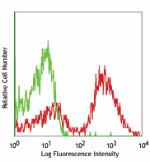
BALB/c mouse splenocytes stained with purified 3/23, followe... 
Balb/C mouse frozen spleen tissue slices were fixed with 4% ... -
Biotin anti-mouse CD40
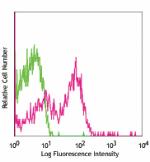
BALB/c splenocytes stained with biotinylated 3/23, followed ... -
FITC anti-mouse CD40
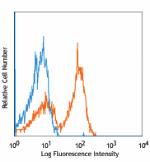
BALB/c splenocytes stained with 3/23 FITC -
PE anti-mouse CD40
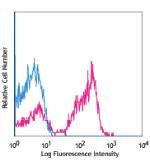
BALB/c splenocytes stained with 3/23 PE -
APC anti-mouse CD40

BALB/c splenocytes stained with 3/23 APC -
Alexa Fluor® 647 anti-mouse CD40
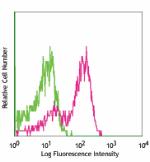
BALB/c splenocytes stained with 3/23 Alexa Fluor® 647 -
PE/Cyanine5 anti-mouse CD40
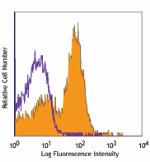
C57BL/6 splenocytes stained with 3/23 PE/Cyanine5 -
PE/Cyanine7 anti-mouse CD40

BALB/c splenocytes stained with CD40 (clone 3/23) PE/Cyanine... -
Ultra-LEAF™ Purified anti-mouse CD40
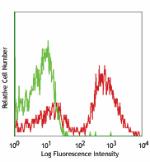
BALB/c mouse splenocytes stained with Ultra-LEAF™ purified C... -
PerCP/Cyanine5.5 anti-mouse CD40
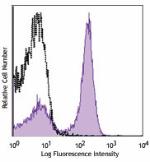
C57BL/6 mouse splenocytes were stained with CD40 (clone 3/23... -
Pacific Blue™ anti-mouse CD40
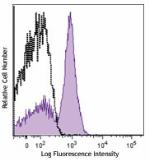
C57BL/6 mouse splenocytes were stained with CD40 (clone 3/23... -
PE/Dazzle™ 594 anti-mouse CD40
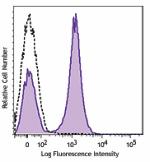
C57BL/6 mouse splenocytes were stained with CD40 (clone 3/23... -
APC/Fire™ 750 anti-mouse CD40

C57BL/6 mouse splenocytes were stained with CD40 (clone 3/23... -
TotalSeq™-C0903 anti-mouse CD40
-
TotalSeq™-A0903 anti-mouse CD40
-
APC/Cyanine7 anti-mouse CD40
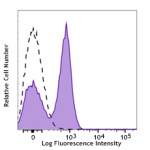
C57BL/6 mouse splenocytes were stained with CD40 (clone 3/23... -
TotalSeq™-B0903 anti-mouse CD40 Antibody
-
Brilliant Violet 421™ anti-mouse CD40

C57BL/6 mouse splenocytes were stained with anti-mouse CD19 ... -
Brilliant Violet 650™ anti-mouse CD40

C57BL/6 mouse splenocytes were stained with anti-mouse CD19 ... -
Brilliant Violet 785™ anti-mouse CD40

C57BL/6 mouse splenocytes were stained with anti-mouse CD19 ...
